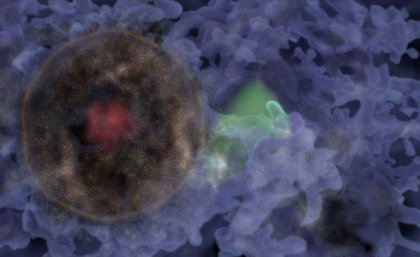
An international team of astronomers has discovered a giant ‘bubble’ of galaxies, measuring one billion light-years across, in the nearby universe.
Team member Dr Cullan Howlett from The University of Queensland’s School of Mathematics and Physics said the discovery has significant implications for how the expansion rate of the universe is measured – a major point of contention amongst cosmologists.
“This phenomenal bubble is a fossil from the time of the Big Bang 13 billion years ago, when the universe was formed,” Dr Howlett said.
“We weren’t even looking for it, but the structure is so huge it spilled to the edges of the sector of the sky we were analysing.
“It dwarfs many of the largest known structures such as the Sloan Great Wall and Boötes Supercluster, which actually form part of this bubble.
“What makes it even more unbelievable is it’s right in our backyard.”
The bubble, found using data from the Cosmicflows-4 and Sloan Digital Sky Surveys, is centred approximately 820 million light-years from our own galaxy.
The research team, led by the University of Hawai’i Institute of Astronomy, has named the bubble Hoʻoleilana, after a Hawaiian creation chant evoking the origin of structure.
Structures of this type are predicted by the Big Bang theory, as a pattern of wrinkles in the density distribution of the early universe known as Baryon Acoustic Oscillations (BAO).
BAO provide an independent way to measure the expansion rate of the universe and how the rate has changed throughout cosmic history.
Dr Howlett said it may be the first time astronomers have successfully identified an individual BAO.
“The bonus of this discovery is that it gives us a clearer picture of the expansion rate of the universe,” he said.
“Our analysis suggests because this bubble is larger than expected, the universe has expanded further than originally predicted.
“Discrepancies in measurements of the expansion rate of the universe are probably the biggest issue in cosmology right now, and this adds more fuel to that conversation.
“We’re now a step closer to a great change in the field of cosmology, where the whole model of the universe might need re-evaluating.”
Researchers are set to use data from the next generation of galaxy surveys, including from the Dark Energy Spectroscopic Instrument, to study and confirm more details about Ho’oleilana, BAO, and the expansion rate of the universe.
“We expect the data will give us unprecedented ability to search the universe for even more incredible discoveries,” Dr Howlett said.
This research is published in The Astrophysical Journal.
Images available via Dropbox
Media: Dr Cullan Howlett, c.howlett@uq.edu.au, +61 420 776 717; Faculty of Science Media, science.media@uq.edu.au, +61 438 162 687.
.jpg)









